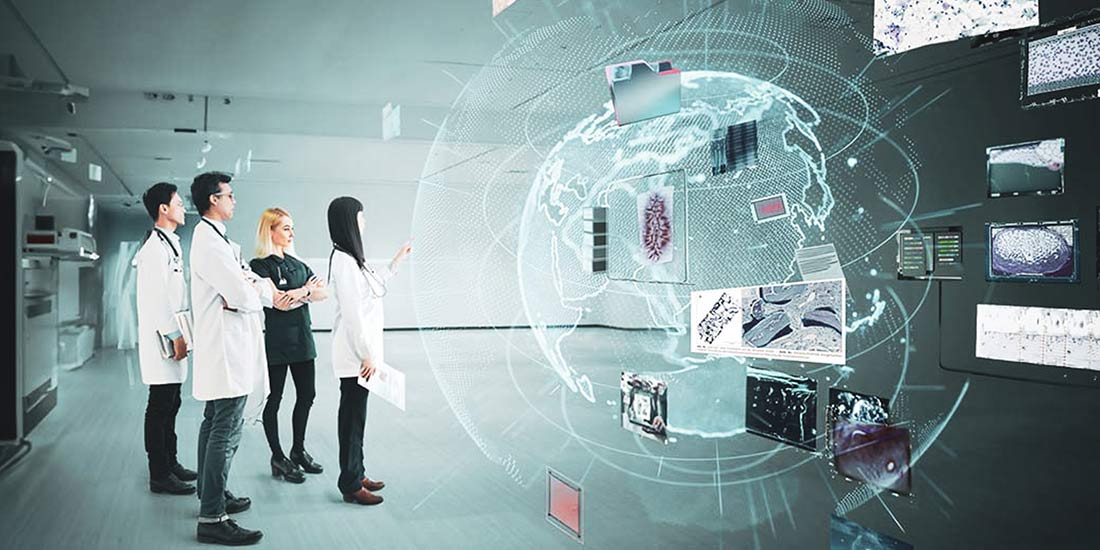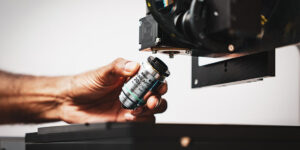Synopsis
Telepathology through the lens of virtual microscopy doesn’t just hold potential; it’s a blazing trail of progress that has left a distinctive mark on pathology over the past two decades. Pathologists worldwide are actively shaping a future where cutting-edge technology elevates the quality of their work to unprecedented heights. In remote corners of the world, telepathology steps in as a beacon of hope, shedding light on diagnoses and paving the way for improved treatment outcomes. It’s not just helpful; it’s a lifeline for communities that would otherwise be isolated from the healing touch of modern medicine. Concepts like augmented reality (AR), virtual reality (VR), artificial intelligence (AI), and 5G affect telepathology and virtual microscopy by creating better possibilities than ever. They involve a high dose of accuracy and efficiency that leads to optimal results. In the pages that follow, we’ll uncover the defining characteristics of this field, one of the most significant changes in the landscape of healthcare innovation. We’ll also explore their potential, the possibilities, and the profound impact that the future holds for telepathology.
The Evolution of Telepathology
Telepathology, the process of diagnostic histopathology, is performed on digital images viewed on a display screen rather than by conventional glass slide light microscopy. The technology of telepathology has radically improved over the past 5 years so that it is no longer a limiting factor in the diagnostic process.
Future Trends of Telepathology
The future of telepathology holds tremendous promise, marked by substantial advancements and transformative shifts. In the years ahead, we anticipate a seamless fusion of cutting-edge technologies, a deeper focus on elevating patient care, and an unwavering commitment to upholding the highest medical standards and ethics. These trends collectively herald an auspicious era for telepathology, poised to substantially improve healthcare accessibility and outcomes, ultimately reshaping our approach to understanding and diagnosing diseases. There are several key developments and trends that you need to keep an eye on in the coming days and months.
Stay Ahead with Insights from Precipoint!
Welcome to our newsletter! Be the first to know about our latest products, services, webinars, and happenings in PreciPoint. Don't miss out on this opportunity to stay informed. Subscribe to our newsletter today!
By clicking “Subscribe”, you agree to our privacy policy.
Artificial Intelligence
Artificial intelligence (AI) in telepathology is a game-changer. It’s not just a tool; it’s the path to more accurate and efficient diagnoses. By harnessing AI algorithms to analyze digital pathology images, pathologists are empowered to make quicker, more informed decisions. This dynamic partnership between human expertise and AI is revolutionizing healthcare, promising better outcomes for patients worldwide. AI and machine learning play a pivotal role in telepathology, aiding in disease diagnosis, anomaly detection, and patient outcome prediction. This role is poised for continued expansion.
Augmented Reality and Virtual Reality
Augmented reality (AR) and virtual reality (VR) in telepathology bring a new dimension to diagnostics. With AR, pathologists can overlay critical information on real-world views, enhancing their understanding of complex cases. VR immerses them in a 3D world of tissue samples, providing an unparalleled level of detail and depth. Together, AR and VR are redefining how pathologists interact with digital slides, offering a more intuitive and immersive experience for precise diagnoses. AR and VR technologies allow for immersive exploration of 3D tissue sample representations, offering a more intuitive and engaging approach to remote patient examination. This enhances the comprehensiveness of analysis and improves understanding of complex cases.
Internet of Things and Connectivity
The Internet of Things (IoT) and enhanced connectivity in telepathology are like the nervous system of a digital revolution. IoT devices seamlessly integrate with telepathology workflows, enabling real-time monitoring, specimen tracking, and automated data capture. This interconnectedness ensures that pathologists have access to the latest information, enhancing efficiency, and ultimately reducing errors and improving patient care.
5G Technology
5G technology is the turbocharger of telepathology. With lightning-fast data transmission, 5G networks enable high-resolution images and videos to be shared in real time, making remote consultations smoother and more responsive than ever. The era of near-instantaneous access to critical pathology insights is here, thanks to 5G. The rollout of 5G networks will greatly enhance data transmission in virtual microscopy. Transmission of high-resolution images and videos in real time enables you to collaborate with minimal lag.
Blockchain for Data Security
Blockchain is the guardian of data security in telepathology. Its decentralized, tamper-resistant ledger ensures the privacy and integrity of patient information and digital pathology images. As a digital fortress, blockchain fortifies the trustworthiness of telepathology, safeguarding sensitive medical data with an unyielding shield. Blockchain technology will be increasingly used to manage patient data and digital pathology images. Its nature can ensure the privacy and integrity of sensitive medical information.
Robotics and Automation
It is predicted that the robotics system will assist in the preparation of tissue samples and the scanning of slides. Consequently, this automation will significantly diminish manual labor and the associated variability in slide quality, leading to a streamlined telepathology workflow. The integration of robotics and automation holds substantial promise in enhancing the diagnostic process within telepathology. These robotic systems handle tasks like specimen preparation and slide scanning with precision and consistency, reducing the manual workload for pathologists. By automating routine processes, they pave the way for more efficient and accurate diagnoses, making telepathology a potent force in modern healthcare.
Conclusion
In the past two decades, telepathology through virtual microscopy has seen significant advancement, yielding numerous benefits. Today, pathologists can deliver high-quality services, ensuring optimal treatment outcomes, not only in well-developed urban areas but also in remote rural regions previously underserved. Telepathology has democratized access to quality healthcare, a testament to the successful merger of pathology with technology. This transformation has extended globally, introducing diverse solutions that facilitate seamless communication among pathologists, despite physical distances. A clear trend has emerged that shows technology will continue to integrate with telepathology and virtual microscopy. The advent of artificial intelligence (AI), augmented reality (AR), virtual reality (VR), Internet of Things (IoT), 5G, blockchain, and robotics promises even more advanced capabilities, enhancing the efficiency, speed, and precision of disease treatment, ultimately leading to improved outcomes.











